Posts
Do I Have to Provide Employees Time Off to Vote?
Last Updatedin Benefits & Compensation, Communications, HR Compliance Question of the Week
What Role Should HR Play in Benefits Open Enrollment to Ensure Success?
Last Updatedin Benefits & Compensation Question of the Week
How To Follow ACA Reporting Requirements & Avoid Penalties
Last Updatedin HR Compliance Question of the Week
Conflict Management Strategies To Help Employees Work Together
Last Updatedin Employee Relations, Videos Question of the Week, Video
What To Do In An Active Shooter Incident
Last Updatedin Health, Safety & Security, Training & Development Question of the Week
Civility in the Workplace
Last Updatedin Employee Relations, Videos Question of the Week, Video
How Can I Manage Candidate Use of Artificial Intelligence (AI) in the Recruiting Process?
Last Updatedin Recruitment Question of the Week
What Are Some Resources and Strategies to Recruit Veterans?
Last Updatedin Recruitment Question of the Week
The Top Seven Handbook Policies to Include This Year
Last Updatedin HR Compliance, HR Strategy Question of the Week
What Questions Should I Ask During An Exit Interview?
Last Updatedin Employee Relations Question of the Week
How Do I Write and Deliver a Written Warning?
Last Updatedin Recordkeeping Question of the Week
How Can I Improve My Recruitment Processes?
Last Updatedin Recruitment Question of the Week
Specific Ways HR Can Cultivate an Inclusive Workplace
Last Updatedin Employee Relations Question of the Week
Federal Employment Poster Requirements for On-Site and Remote Workers
Last Updatedin HR Compliance, Recordkeeping Question of the Week
How to Handle Unemployment Fraud?
Last Updatedin Employee Relations Question of the Week
Six Key Leadership Attributes for Your Leadership Development Plan
Last Updatedin HR Strategy Question of the Week
How Long Should We Keep Resumes and Applications?
Last Updatedin Recordkeeping Question of the Week
What Should I Include in the First 90-Day Introductory Period?
Last Updatedin Recruitment Question of the Week
What is the Cost of a Bad Hire?
Last Updatedin Recruitment Question of the Week
Hiring Tips: How to Prevent a Bad Hire
Last Updatedin HR Strategy, Recruitment, Training & Development Question of the Week
How Can I Support Employee Well-Being Beyond the EAP?
Last Updatedin Employee Relations, Health, Safety & Security Question of the Week
How Do I Handle Missing or Incorrect I-9 Forms?
Last Updatedin HR Compliance, Recordkeeping Question of the Week
How Can HR Play a Strategic Role in My Organization?
Last Updatedin HR Strategy Question of the Week
What Employers Need To Know About Michigan’s Earned Sick Time Act (ESTA)
Last Updatedin Benefits & Compensation, HR Compliance Question of the Week
How Can I Use Salary Benchmarking As a Recruitment Strategy?
Last Updatedin Benefits & Compensation, Recruitment, Videos Question of the Week, Video
How to Manage Creditable Coverage Reporting and Notices
Last Updatedin HR Compliance Question of the Week
Barriers To Effective Training and Development
Last Updatedin Training & Development Question of the Week
How Can I Get My Team More Engaged in Training?
Last Updatedin Training & Development Question of the Week
Three Ways Employers Can Promote Work-Life Balance
Last Updatedin Employee Relations Question of the Week
What Are Employee Pulse Surveys And How Can They Increase Retention?
Last Updatedin Employee Relations Question of the Week
Do I Need a New I-9 Form for a Name Change?
Last Updatedin HR Compliance, Recordkeeping Question of the Week
Do I Have to Give Performance Bonuses to Employees on FMLA Leave?
Last Updatedin Benefits & Compensation Question of the Week
What are the Best HR Practices for the End of the Year?
Last Updatedin HR Compliance, HR Strategy, Recordkeeping Question of the Week
What to do if the IRS notifies you of Affordable Care Act (ACA) penalty fees
Last Updatedin Recordkeeping Question of the Week
How to Conduct an Internal I-9 Audit
Last Updatedin HR Compliance, Recordkeeping Question of the Week
How To Conduct A Workplace Harassment Investigation
Last Updatedin Employee Relations, HR Compliance Question of the Week
What are the Latest ACA Reporting Changes and Deadlines?
Last Updatedin Benefits & Compensation, HR Compliance Question of the Week
How Can My Company Choose Between Different Types of Recruitment Services?
Last Updatedin Recruitment Question of the Week
Are Evacuation Drills Mandatory to Meet OSHA Training Requirements?
Last Updatedin Health, Safety & Security, Training & Development Question of the Week
How To Handle Expired Prescription Drug Use In The Workplace?
Last Updatedin Health, Safety & Security, HR Compliance, Training & Development Question of the Week
What Can We Do to Make Onboarding Training Stick?
Last Updatedin Training & Development Question of the Week
Steps Toward a Successful Recruitment Process
Last Updatedin Recruitment Question of the Week
What Happens If the Non-Compete Ban Goes Into Effect?
Last Updatedin HR Compliance Question of the Week
What Are The Top 5 Commonly Missed Records In Employee Personnel Files?
Last Updatedin HR Compliance Question of the Week
Can I backdate FMLA paperwork?
Last Updatedin Benefits & Compensation, HR Compliance, Recordkeeping Question of the Week
Contact Us
Clark Schaefer Strategic HR
10856 Reed Hartman Hwy
Suite 225
Cincinnati, OH 45242

Clark Schaefer Strategic HR is recognized by SHRM to offer Professional Development Credits (PDCs) for SHRM-CP® or SHRM-SCP® recertification activities.
The information provided on this website does not, and is not intended to, constitute legal advice; instead, all information, content, and materials available on this site are for general informational purposes only. Readers of this website should contact their attorney to obtain advice about their particular situation and relevant jurisdiction. This website contains links to other third-party websites. These links are only for the convenience of the reader, user or browser; Strategic HR does not recommend or endorse the contents of the third-party sites.







